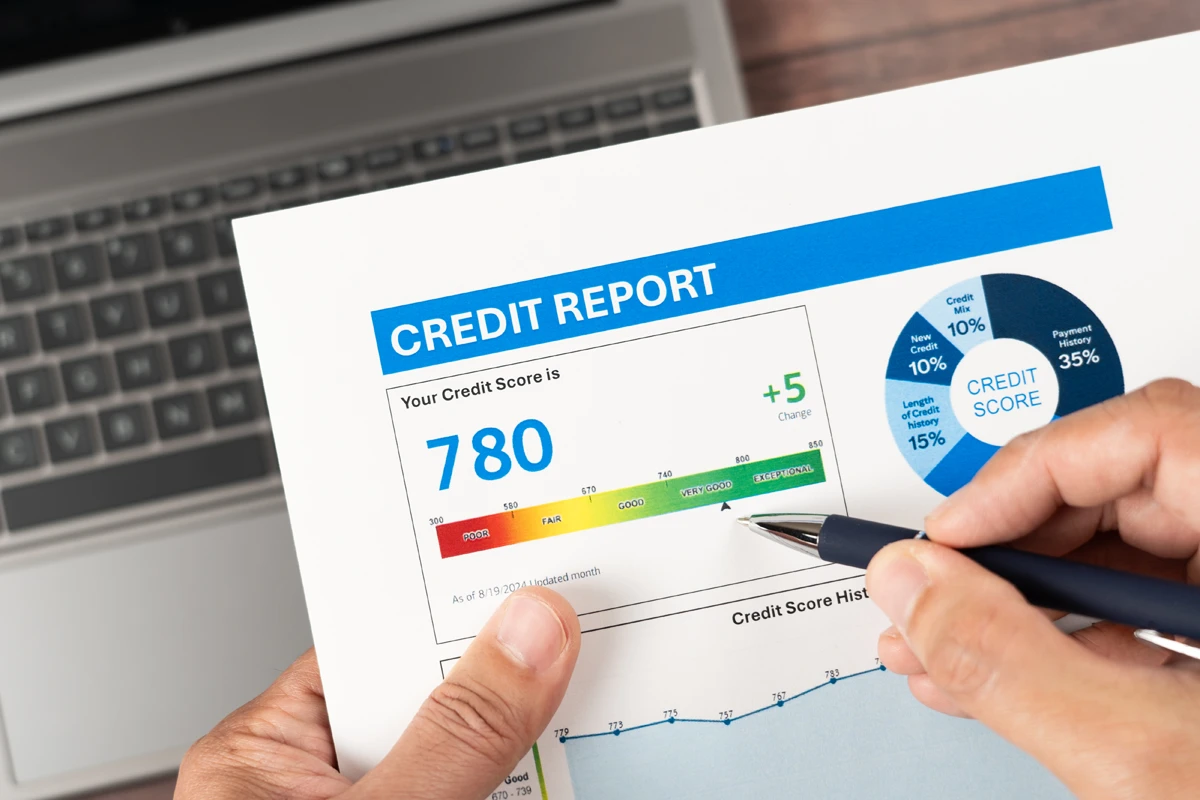Stop everything—your credit score isn’t a back-burner worry; it’s the silent tax on every major life decision you’ll ever make. A 580 score today can add over $150,000 to your costs by age 30—meaning one missed payment or maxed-out card can slam the door on your dream apartment, skyrocket your car loan interest, and jack up insurance premiums into the stratosphere. This isn’t about “someday”—it’s about right now. In this article, you’ll see exactly how a low credit score crushes your options early in life, and you’ll get the zero-fluff, bulletproof playbook to fix it before those six-figure losses become your reality.
Credit Score 101: Your Financial Report Card

Your credit score is the single easiest way for banks, landlords, insurers—even your cell-phone carrier—to judge your financial fitness in one glance. It’s built from five key workouts:
- Payment History (35%) – Every on-time payment is a rep on the machine. Miss one? Your score skips leg day and tanks.
- Utilization Rate (30%) – Imagine you’ve got a 100-lb barbell and you stuff 80 lbs on it every set. That’s a 80% utilization rate. Your score likes to see you lifting under 30%—it shows you’re not maxing out your capacity.
- Account Age (15%) – The longer you’ve kept those accounts open, the more “experience points” you rack up. Closing old cards is like deleting your best performance reviews.
- Credit Mix (10%) – A blend of revolving credit (cards) and installment loans (auto or student) is like combining cardio and strength training—you’ll look more well-rounded to the credit bureaus.
- Hard Inquiries (10%) – Each inquiry is a speed bump. A couple won’t kill you, but a cluster will slow you down big time.
Why it matters right now
- Landlords scan your report before handing you keys.
- Lenders slap sky-high interest rates on bad credit; what looks like a $200 car payment could balloon to $350.
- Insurers tack on surcharges—think of it as a “bad risk” tax.
Action Step: Pull your free credit reports at AnnualCreditReport.com and map out where you stand in each category. Knowledge is the first rep in rebuilding your score.
The Domino Effect: When One Low Number Triggers Many

A single ding to your score doesn’t stay isolated—it topples opportunity after opportunity like a line of unwatched dominoes.
- Car Loans: A 580 score can jack your APR from 5% to 15–20%. On a $25,000 loan, that’s an extra $200+ per month—money you’ll never get back.
- Rentals & Security Deposits: Landlords fear risk. With a sub-600 score, you’re either denied or asked for a $1,500+ deposit on a $1,200 apartment.
- Insurance Premiums: Auto and home insurers charge “high-risk” drivers more. You’ll pay hundreds—sometimes thousands—extra annually.
- Utilities & Cell Phones: Many providers require security deposits or flat-out refuse service if your score screams “high risk.”
- Job & Background Checks: Some employers and staffing agencies peer at your credit. A low score can filter you out before you even get an interview.
Real-Life Flash
Meet Sara, 26. One late credit-card payment in college dropped her score to 570. When she applied for her first apartment, she was quoted a $2,000 deposit—nearly two months’ rent. She ended up in a crummy studio farther from work, adding $200/month in commute costs and 10+ hours of lost weekend freedom.
Action Step: List every area where your score affects you—auto, rent, insurance, utilities, jobs—and assign a dollar cost to each “penalty.” Seeing the true price tag makes repairing your score a no-brainer.
True Cost Breakdown: Dollars and Sense

Numbers don’t lie—and neither do these real-world hits to your wallet:
Case A: The Auto Loan Trap
- Scenario: $25,000 car loan over 60 months
- 580 Score @15% APR: ~$580/month, ~$8,800 total interest
- 680 Score @5% APR: ~$472/month, ~$3,300 total interest
- Impact: That 100-point gap costs you $108 extra per month and $5,500 more over the life of the loan—money you’ll never get back.
Case B: Rental Roulette
- Scenario: $1,200/mo apartment
- Score <600 Deposit: $2,000 up front
- Score ≥700 Deposit: $500 up front
- Impact: A poor score forces you to lock up an extra $1,500 of cash for months—crippling your emergency fund and trapping your cash in security deposits.
30-Year Mortgage Snapshot
- Scenario: $200,000 mortgage over 30 years
- 620 Score @4.5% APR vs. 650 Score @4.0% APR
- Impact: Roughly $70 less per month on principal & interest—$25,000 saved over 30 years.
Takeaway: Every 20–30 points on your score translates into hundreds of dollars saved each year. These “hidden fees” add up fast—don’t let them eat your budget alive.
Quick Wins: Stop the Bleeding Today

Pick one of these no-excuses moves and execute this week—then rinse and repeat:
1. Pull Your Reports
- Action: Visit AnnualCreditReport.com and download all three reports.
- Why: You can’t fix what you don’t see; errors hide in plain sight.
2. Dispute Errors Immediately
- Action: Challenge any late payments, misreported balances, or closed accounts that show as open.
- Why: 1 in 5 reports has mistakes—correcting one error can boost you 20–30 points overnight.
3. Automate Every Payment
- Action: Set up autopay for credit cards, loans, and utilities.
- Why: Late fees and missed payments are score-killers. Automation is your “set-and-forget” defense.
4. Crush Your Utilization
- Action: Transfer balances or pay down cards to keep utilization under 30%.
- Why: High usage is like showing your lenders you’re living on the edge—calm their nerves by keeping your usage lean.
5. Launch a Credit-Builder Account
- Action: Open a secured credit card or a small credit-builder loan—use it for a recurring subscription, then pay it off in full each month.
- Why: You establish an on-time payment history without risking overspending.
Action Step: Choose one “Quick Win,” complete it today, and text yourself a reminder to tackle the next one within 48 hours. Momentum is the secret weapon of every credit comeback.
The Long-Game Playbook: Build Bulletproof Credit

Short bursts won’t win the marathon—here’s your sustainable, no-fluff plan:
Lean into Account Age: Keep your oldest cards open. Closing them erases years of “experience points.”
Space Out Hard Inquiries: Treat each application like a speed bump. More than one every six months and you’ll feel the drag.
Balance Your Credit Mix: Combine revolving (credit cards) with installment loans (auto, student) to show you can handle both steady and flexible debt.
Automate Monthly Check-Ins: Put a recurring calendar alert on the first of every month to review your score and spot spikes in utilization or unexpected inquiries.
Frugal Power Move: When you get extra cash—tax refunds, bonuses, side-hustle earnings—snowball it into your highest-interest balance. Think of debt like weeds: pull them regularly before they choke your garden.
Pro Tip: Credit improvement compounds over time. A consistent 1–2-point bump each month is worth more than a 20-point swing and a quick relapse.
The Freedom Lever: Elevate Your Future
Your credit score isn’t just a number—it’s the lever that lifts every major decision in your life. You’ve armed yourself with rapid-fire fixes and a marathon-ready strategy. Now, pull that lever with intention: schedule your first long-game habit for this week, and watch your score—and the doors it opens—rise month after month. In six months, you won’t just see a higher number; you’ll feel the freedom it delivers.









